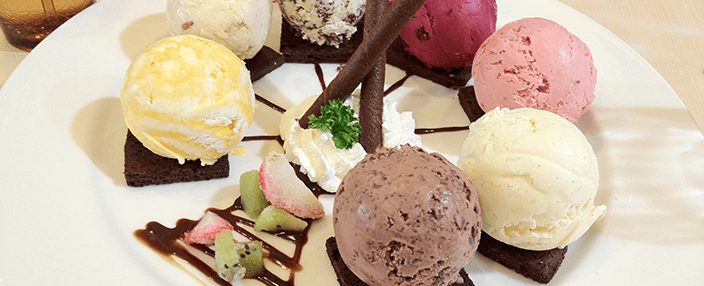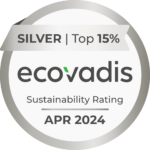After reading a blog post by David Meerman Scott about acquiring content creation ideas from noticing patterns in daily life (he used exercise and social networking as his example), I made a connection with homemade ice cream.
I deliberated over the recipes in David Lebovitz’s The Perfect Scoop before I recently splurged and made dulce de leche ice cream for Father’s Day. It was my first homemade batch of the summer season, and based on the slurping I heard from my taste testers who sought to lick the paddle, it was a success.
Back in the office on Monday morning, with its deliciousness still lingering on my taste buds, it struck me that making homemade ice cream is similar to content writing for real-time media channels in the B2B world. Creating an offering with value and making it easy and enjoyable to consume — isn’t this the strategy we strive to use when we write content for blogs posts, Twitter, Facebook, Google+ and more?
From the initial selection of ingredients to the final presentation, making and serving ice cream shares some key elements with creating and communicating real-time media content.
Be enticing
If I’m going to make an investment in both my time during the process and money for ingredients, the flavors must appeal to me as I sift through the photos and recipes spread throughout my copy of The Perfect Scoop. Chocolate-peanut butter, orange popsicle and coffee mocha chip – I’m hooked. Green pea, olive oil and Roquefort-honey flavors – not so much.
Similarly, the title or headline to introduce your content – no matter what channel you’re writing for – needs to entice your readers. Think about the memorable content you’ve been drawn to. What’s the appeal? If the headline or title doesn’t serve as an effective hook and draw you in, there’s a good chance that rather than skim, you’ll skip what follows. Studies show on average 8 out of 10 people read headlines, while only 2 out of 10 go on to read the content.
All the more reason for that first short set of words your readers see to be compelling and irresistible enough to lead viewers down the page.
Provide rich, basic ingredients
In general, I prefer to use fresh, local ingredients whenever I can in my cooking; ice cream is no exception. Fresh, basic ingredients — cream, whole milk, eggs, seasonal fruit, or quality chocolate — these provide the flavor and texture I crave in the end product. Likewise with the content you create. Fresh language. No adder filler. Vivid verbs. Unique combinations of ideas. A relevant message followed by a powerful call to action. These elements, when given the proper mix, produce engaging, quality content.
Mix up the content
After generating a good base, mix-ins for ice cream give it the extra edge, boosting its salty/crunchy effect. And depending on your personal preferences, the choices are plentiful. You can ramp up a basic flavor with various toppings: chopped and glazed nuts, peanut brittle, peppermint patties, espresso beans or a drizzle of hot fudge sauce.
As for mixing up your real-time media content, visual is the way to go. Showing and telling is the effective combination for sharing your message. Any time you can include images in the form of video, Slideshare, infographics, photos or animated graphics, you create a greater hook. You’ll increase page visits and engagement and leave a longer lasting impression for your followers.
Presentation counts
Ice cream can be presented in a variety of appealing ways. Lebovitz devotes an entire chapter in his book to edible vessels, or how you can serve the finished product. In addition to the traditional bowl or parfait glass, he suggests cones, crepes, meringue nests or sandwiched cookies as a few options.
Similarly, the way you display your content in a blog post can determine if a reader skims or skips the text. Break. Up. Sentences. Use subheads, bulleted lists and white space to provide visual variety. Vary sentence length. Supply internal links that lead your readers to other content on your site. Bold critical points.
Leave them satisfied
Offer the right flavor, use the best recipe and ingredients and don’t overload content with irrelevant material.
At the end of the day, while the world is always looking for the perfect scoop of ice cream, your readers are always looking for dynamic, useful material. So, whether you’re serving up the soft treat or written content, the goal is to transform your ingredients into an appealing end product that’s easily consumed and shared, while leaving your audience hungry for more.
Identify patterns or routines in your daily life. Consider ways they can be used when writing content across the B2B landscape. How do you entice readers and maintain followers through real-time media?




